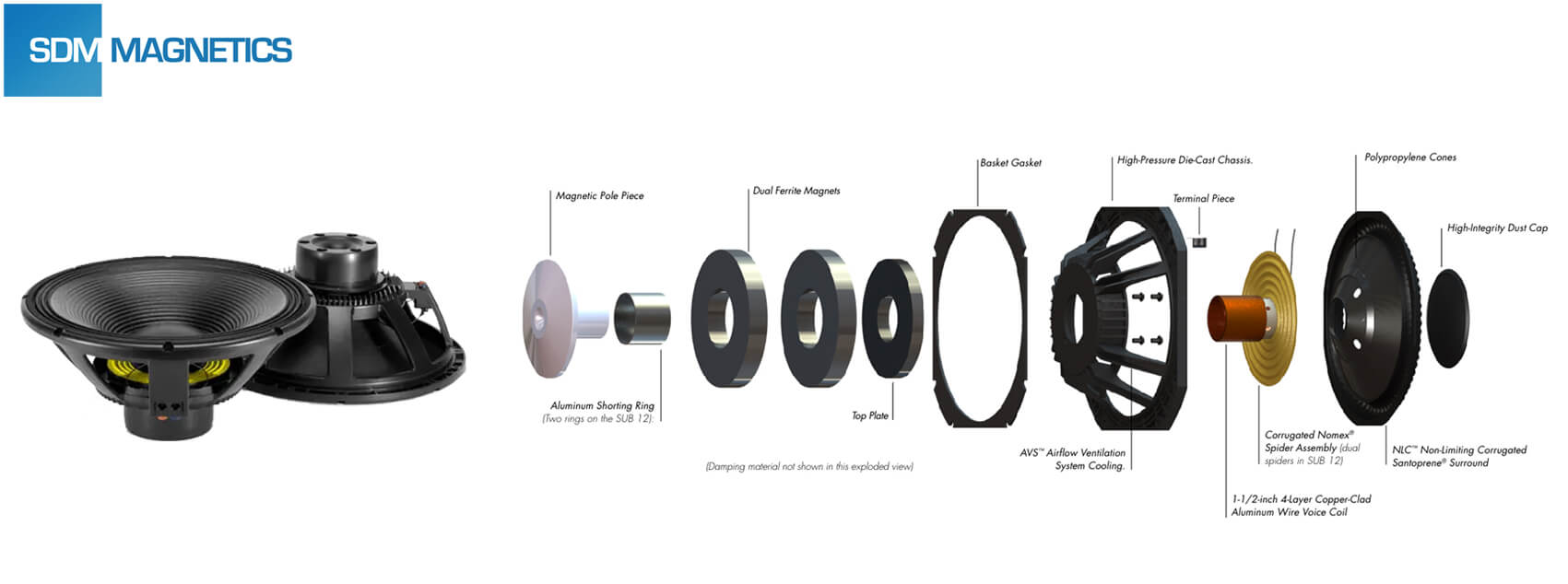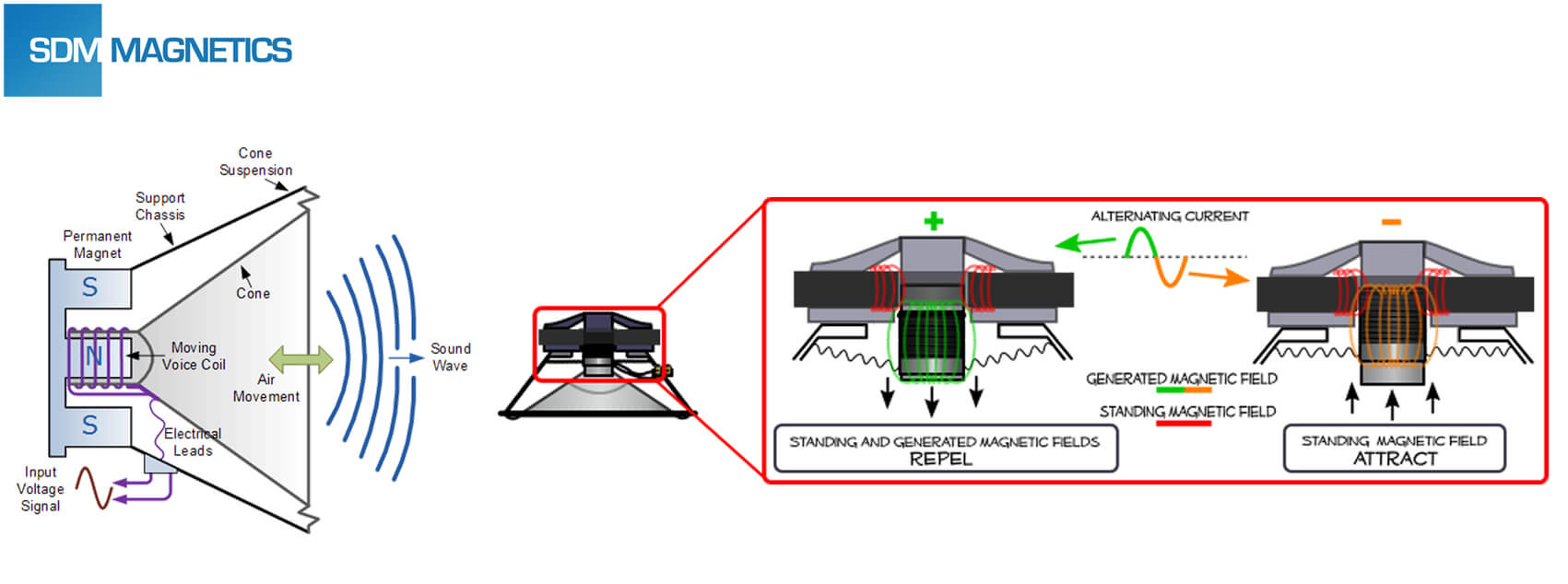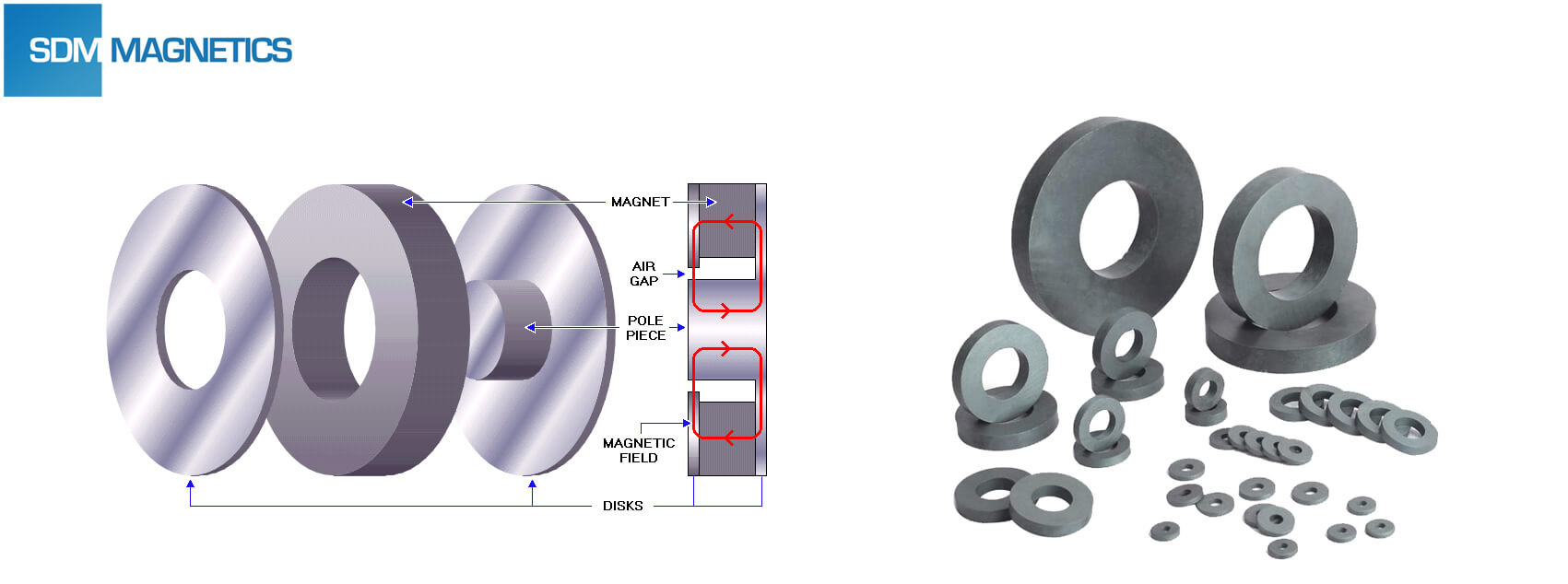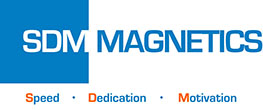Speakers are a type of transducer which can transfer the electric signal to the acoustic signal. The sound quality of the speaker is largely depended on the speaker magnets. Speakers can be classified to internal magnetic type and external magnetic type according to the magnetic circuit structure. Speakers also can be divided into the moving-coil type, electromagnetic type, piezoelectric type, and capacitive type base on the transducer principle. As the most important vocal style of modern speakers, the early moving-coil speakers were adopted electromagnetic driving due to the lag development of permanent magnet. With the advent of AlNiCo magnets, moving-type speakers came into permanent driving from electromagnetic driving, thus stability and authenticity of sound largely enhanced.
Basic Structure and Working Principle of Speaker Magnets
Speakers contain vibration system, magnetic circuit system, and auxiliary system. Magnetic circuit system can be further decomposed to permanent magnets, back plate, and front plate.

The energy generated by coil will interact with permanent magnet’s magnetic field when different electron energy transmits to the coil, and thus interaction further lead cone to vibrate. In the meanwhile, electron energy is changing frequently and either coil or cone will move forward or backward, therefore, air density will change and thus generate sound.

About Speaker Magnets
Magnetic performance has direct influence on the sound quality when magnet’s volume and voice coil are same. Speaker magnets are mainly including AlNiCo magnets, ferrite magnets, and sintered Neodymium magnets. As the earliest speaker magnets, AlNiCo magnets were generally served to internal magnetic type speakers. Its power relatively low and frequency range is narrow. Ferrite magnets are normally utilized by external magnetic type speakers. Due to the limitations of magnetic performance, ferrite magnets need the certain volume to fulfill the driving force of the speaker. Ferrite magnets have excellent cost performance, but the drawback is low volume and narrow frequency ranges. Magnetic performance of sintered Neodymium magnets is significantly higher than either AlNiCo or ferrite magnets, and it is also mostly used speaker magnets at present.


March 9, 2023
Hi. I am looking for a source of radially magnetized uni-polar magnet rings and cylinders with large diameter. looking for diameters of 3- 14 inches. Can you point me in the right direction?
Thanks,
Tony